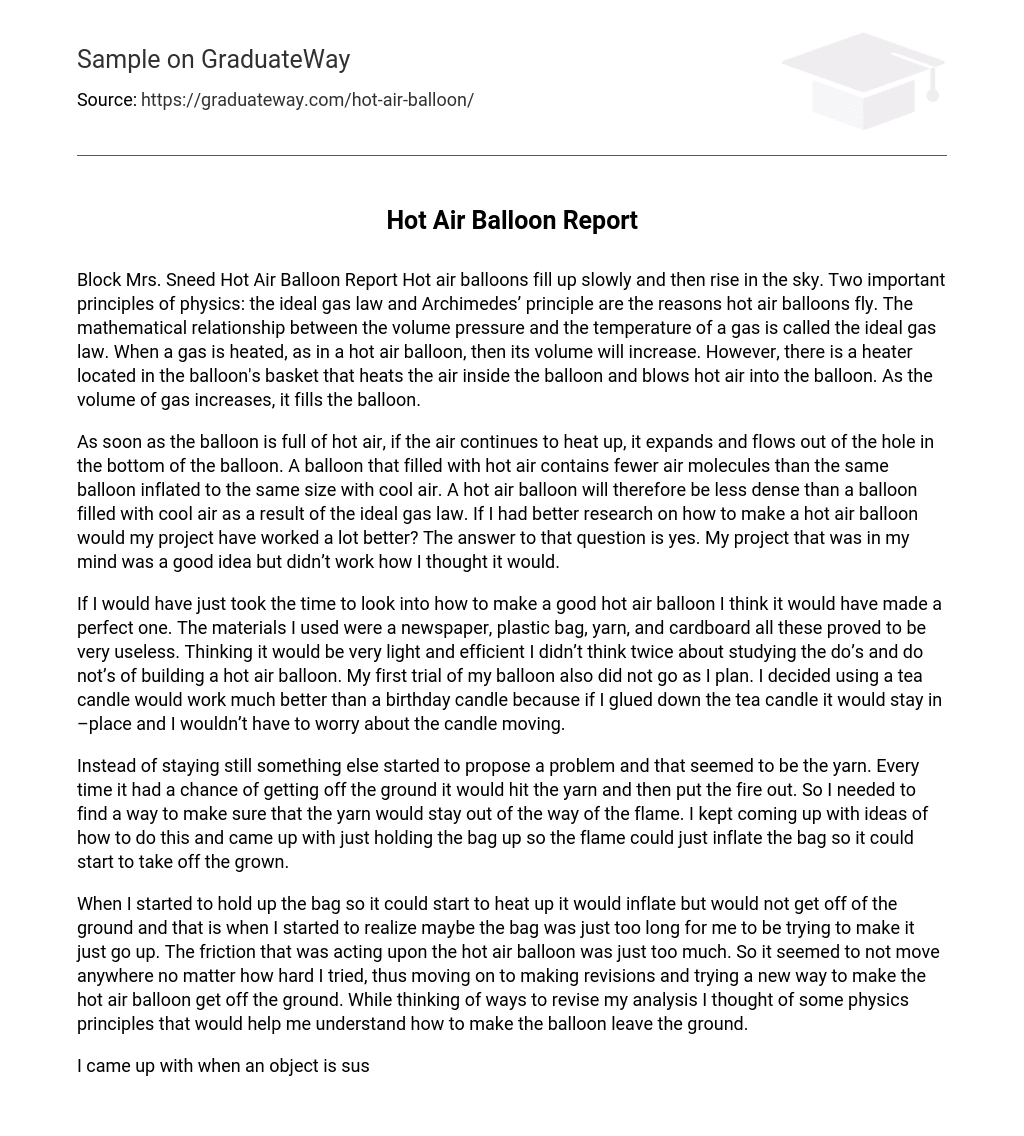Hot air balloons fill up slowly and then rise in the sky. Two important principles of physics: the ideal gas law and Archimedes’ principle are the reasons hot air balloons fly. The mathematical relationship between the volume pressure and the temperature of a gas is called the ideal gas law. When a gas is heated, as in a hot air balloon, then its volume will increase. However, there is a heater located in the balloon’s basket that heats the air inside the balloon and blows hot air into the balloon. As the volume of gas increases, it fills the balloon.
As soon as the balloon is full of hot air, if the air continues to heat up, it expands and flows out of the hole in the bottom of the balloon. A balloon that filled with hot air contains fewer air molecules than the same balloon inflated to the same size with cool air. A hot air balloon will therefore be less dense than a balloon filled with cool air as a result of the ideal gas law. If I had better research on how to make a hot air balloon would my project have worked a lot better? The answer to that question is yes. My project that was in my mind was a good idea but didn’t work how I thought it would.
If I would have just took the time to look into how to make a good hot air balloon I think it would have made a perfect one. The materials I used were a newspaper, plastic bag, yarn, and cardboard all these proved to be very useless. Thinking it would be very light and efficient I didn’t think twice about studying the do’s and do not’s of building a hot air balloon. My first trial of my balloon also did not go as I plan. I decided using a tea candle would work much better than a birthday candle because if I glued down the tea candle it would stay in –place and I wouldn’t have to worry about the candle moving.
Instead of staying still something else started to propose a problem and that seemed to be the yarn. Every time it had a chance of getting off the ground it would hit the yarn and then put the fire out. So I needed to find a way to make sure that the yarn would stay out of the way of the flame. I kept coming up with ideas of how to do this and came up with just holding the bag up so the flame could just inflate the bag so it could start to take off the grown.
When I started to hold up the bag so it could start to heat up it would inflate but would not get off of the ground and that is when I started to realize maybe the bag was just too long for me to be trying to make it just go up. The friction that was acting upon the hot air balloon was just too much. So it seemed to not move anywhere no matter how hard I tried, thus moving on to making revisions and trying a new way to make the hot air balloon get off the ground. While thinking of ways to revise my analysis I thought of some physics principles that would help me understand how to make the balloon leave the ground.
I came up with when an object is suspended in a fluid; the floating force acting on an object is equal to the weight of the fluid displaced which reflects the Archimedes’ principle. As a result of Archimedes’ principle, an object will float in a fluid if it is less dense than the fluid. Most people think of a fluid as being a liquid, however in science a fluid is defined as either a liquid or a gas. Air is therefore a fluid and Archimedes’s principle applies to floating in air as well as floating in a liquid.
I noticed that I could not cut anything so I thought long and hard about what to do and I decided to tie a knot into the bag. The knot in the bag seemed to work really well because it started to make the balloon come off the ground not a whole lot but enough to where you noticed it. The knot in the bag seemed to be like the cut off but the longer the bag stayed up the more it became wore down. The heat was not working well with the plastic so that is one thing that I would change if we had another chance at this assignment because I learned what would be good choices of material to make this hot air balloon a success.





